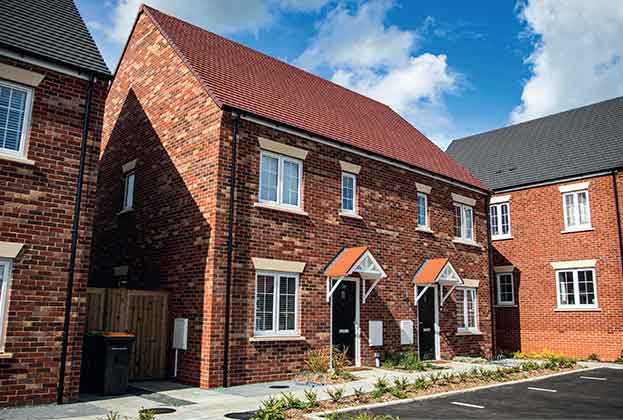For-profit registered providers have almost doubled their stock every year since 2015
Doubling down
Private investment into affordable housing is growing fast. In 2015, just 25 for-profit registered providers (FPRPs) owned 395 homes. Five years on, the number of homes FPRPs own had grown by a factor of more than 20. The number of providers hit 53 in 2021.
FPRPs still own a tiny proportion of all affordable housing: they made up less than 0.2% of stock in 2020. But investor appetite for affordable homes is substantial.
FPRPs look set to grow their share of low-cost home ownership stock from 10% to 25% from development alone by 2026. Sales of established shared ownership portfolios to new entrants will push this number even higher.
We predict FPRPs could commit up to £23 billion for affordable homes by 2026, enough to fund 130,000 new homes for shared ownership and general needs rent.
We’ve based this forecast on interviews with seven of the current largest FPRPs. Conservative estimates from them suggest they’ll have completed around 75,000 affordable homes by 2026 with more in the pipeline.
We estimate total delivery of around 100,000 homes by 2026 accounting for growth from other active FPRPs. We can also expect to see substantial activity from new entrants in the next five years.
Why is affordable housing so attractive to new investors?
Long-term, inflation-linked income. Demand for investments with strong ESG credentials. Exposure to residential real estate. There are many reasons private investors might be interested in affordable housing, but we think these three explain much of the appeal.
UK private pensions represent £6.1 trillion, according to the 2016-18 Wealth and Assets Survey. A little under half of this wealth, £2.9 trillion, is held in pensions in payment. This means these funds need to generate a secure, long-term, inflation-linked income. Affordable housing has long been seen to offer precisely that.
At the same time, investors are growing more aware of the need to invest in sectors with a demonstrably positive impact. Accounting firm PwC predicts that Environmental, Social and Governance (ESG) funds will make up between 41% and 51% of total mutual fund investments by 2025. Investing in environmentally sustainable homes for low-income households through regulated providers is about as ESG-friendly as you can get.
Finally, we are witnessing a shift in real estate asset allocation. As retail property has fallen out of favour with investors, residential has risen up the agenda. Residential returns’ resilience through the pandemic reinforced the sector’s appeal. As a subsector of residential, affordable housing looks set to benefit.
Same capital, different route
Housing Associations (HAs) have long enjoyed safe-haven status from annuity investors. To date, they have lent £87 billion to the sector. We expect that to grow to £130 billion by 2026.
There’s a great deal of overlap between the investors lending to HAs and those funding new FPRPs. Legal & General and M&G have long provided debt to HAs; now they can invest equity and debt in the sector with their FPRPs.
This is a story of the same types of capital finding different routes to market. Some of the new lenders in the RP debt market may one day make the jump to equity investment, whether that means creating their own FPRPs or forming a joint FPRP with an HA. New entrants’ business models will vary.
Some will look to hold stock for the very long term, decades or more. Others may establish portfolios for onward sale to another RP, whether non-profit or for-profit. Alternatively, they might sell share capital or sell part of a tenanted portfolio to another RP, no different to portfolio sales between HAs.
Whatever the model, the homes remain owned by a regulated RP.
There are strong opportunities for partnerships between HAs and FPRPs. We are seeing interest in development joint ventures between HAs and new entrant FPRPs, to marry HA development expertise with private capital.
This could include setting up a joint venture FPRP, to acquire homes developed by the HA and funded by the FPRP.
This is a marriage of HA development capacity and secure pipeline, with investor partner capital. With management retained by the HA, these investment partnerships can be structured flexibly to meet both partners’ objectives for returns. The outcome is continued delivery of affordable homes, whilst freeing HA capacity to invest in energy efficiency and decarbonisation works.
Read the articles within Spotlight: Private capital in affordable housing below.
.jpg)

